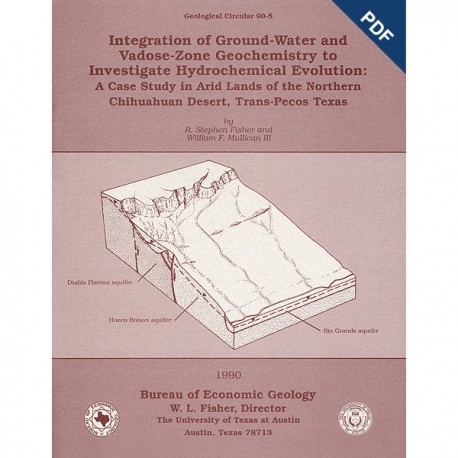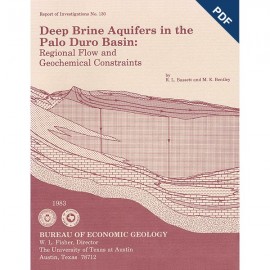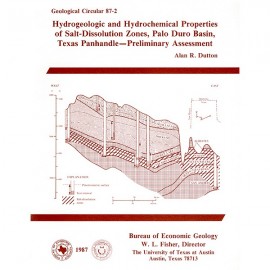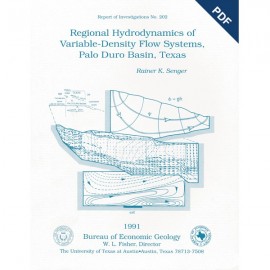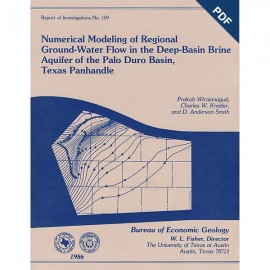Geological Circulars
-
Books & Reports
- Reports of Investigations
- Guidebooks
- Udden Series
- Geological Circulars
- Down To Earth
- Atlases of Major Oil and Gas Reservoirs
- Texas Memorial Museum Publications
- Environmental Geologic Atlas of the Texas Coastal Zone
- Mineral Resource Circulars
- Other Reports
- Seminars and Workshops
- Handbooks
- Submerged Lands of Texas
- Symposia
- Annual Reports
- Open File Reports
-
Maps & Cross Sections
- Thematic Maps
- Miscellaneous Maps, Charts & Sections
- Geologic Atlas of Texas
- STATEMAP Project Maps
- Geologic Quadrangle Maps
- Cross Sections
- Highway Geology Map
- Energy and Mineral Resource Maps
- Shoreline Change and Other Posters
- Wilcox Group, East Texas, Geological / Hydrological Folios
- Bouguer Gravity Atlas of Texas
- River Basin Regional Studies
- Featured Maps
- Posters
- Teachers & the Public
-
Geological Society Publications
- Gulf Coast Association of Geological Societies
- Alabama Geological Society
- Austin Geological Society
- Corpus Christi Geological Society
- Houston Geological Society
- Lafayette Geological Society
- Mississippi Geological Society
- New Orleans Geological Society
- South Texas Geological Society
- GCS SEPM Publications
- Historic BEG & UT Series
Integration of Ground-Water and Vadose-Zone Geochemistry...: Digital Download
GC9005D
For a print version: GC9005.
GC9005D. Integration of Ground-Water and Vadose-Zone Geochemistry to Investigate Hydrochemical Evolution: A Case Study in Arid Lands of the Northern Chihuahuan Desert, Trans-Pecos Texas, by R. S. Fisher and W. F. Mullican III. 36 p., 11 figs., 7 tables, 3 appendices, 1990. doi.org/10.23867/gc9005D. Downloadable PDF.
To purchase this publication in book format, please order GC9005.
ABSTRACT
The hydrochemical history of ground water in the arid southeastern Hueco Bolson and southwestern Diablo Plateau was investigated by collecting soil-moisture samples from unsaturated siliciclastic bolson-fill sediments and groundwater samples from the Diablo Plateau aquifer, the Hueco Bolson silt and sand aquifer, and the Rio Grande alluvial aquifer. Major, minor, and trace solutes, stable isotopic compositions, and activities of tritium and carbon-14 were measured in ground-water samples; major solute concentrations were determined in soil-moisture samples. Soil samples were collected to determine the type and amount of material that could be readily dissolved by recharge water. Core samples of Cretaceous carbonate and bolson-fill material were analyzed to determine the mineralogy of sediment and aquifer matrix.
The Hueco Bolson and Diablo Plateau aquifers contain mainly sodium-sulfate ground water that derived solutes by calcite, dolomite, and gypsum dissolution, coupled with exchange of aqueous calcium and magnesium for sodium on clay minerals and other ion-exchange sites. Rio Grande ground water is dominated by sodium and chloride derived from dissolution of salts precipitated in irrigated fields during times of high evaporation. All ground-water compositions were probably determined early in the flow history, principally through reactions in the unsaturated zone.
Ages estimated from tritium and carbon-14 activities show that Rio Grande ground waters are youngest, reflecting the short flow paths to sampled wells after irrigation and percolation. Young ground waters are also found in the Diablo Plateau aquifer at wells both on the plateau and near the toe of the plateau escarpment. These are inferred to be recharge waters that rapidly moved along fractures to the water table. Other ground-water samples from the Diablo Plateau and Hueco Bolson aquifers are as much as 28,000 yr old. Carbon-14 ages and tritium activities do not vary uniformly along a flow path. However, the oldest waters are found in wells near the center of the bolson pediment, and the distribution of carbon-14 ages generally conforms to the salinity distribution, suggesting a systematic relation between residence time, chemical and isotopic composition of ground water, and regional hydrologic properties of the aquifers.
Keywords: arid-land hydrochemistry, ground-water age, hydrogeochemistry, isotope geochemistry, Trans-Pecos, Texas, vadose zone
Citation
Fisher, R. S., and Mullican, W. F. III, 1990, Integration of Ground-Water and Vadose-Zone Geochemistry to Investigate Hydrochemical Evolution: A Case Study in Arid Lands of the Northern Chihuahuan Desert, Trans-Pecos Texas: The University of Texas at Austin, Bureau of Economic Geology, Geological Circular 90-5, 36 p. doi.org/10.23867/gc9005D.
